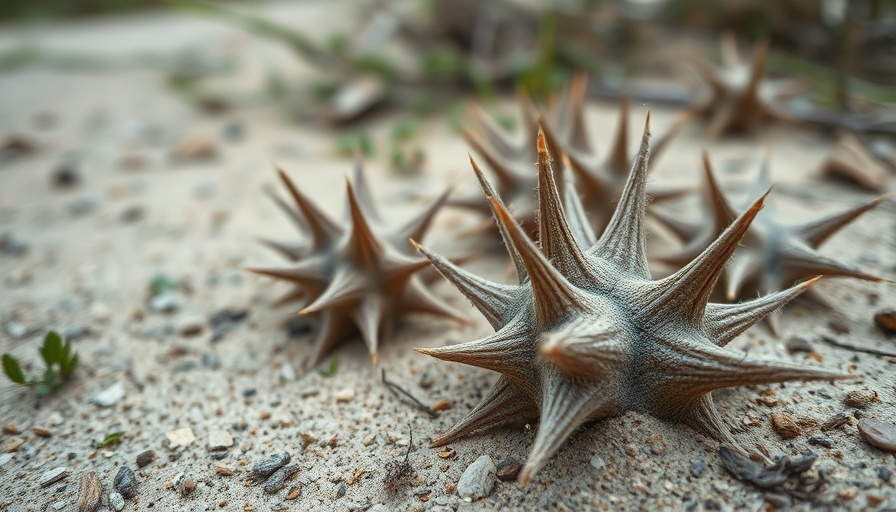
Understanding the Prickly Problem of Sand Spurs
Sand spurs, also known as grass burrs or stickers, are not just an inconvenience for homeowners; they are a major adversary that threaten the pristine appearance and safety of your lawn. Found primarily in warm climates such as the southern United States, these pesky annual weeds thrive in sandy soils and can quickly take over any space they invade. Their sharp, spiny burrs cling to clothing, skin, and even pets, making a day outdoors potentially painful.
Why Are Sand Spurs So Hard to Get Rid Of?
One of the most challenging aspects of controlling sand spurs is their remarkable adaptability. These resilient weeds can lie dormant in the soil for up to five years, waiting for favorable conditions to sprout. Additionally, their burrs can hitch rides on clothing, pets, and wildlife, spreading their seeds far and wide. This unique spreading mechanism and their ability to thrive in neglected areas make them a perennial problem for homeowners and property managers alike.
Effective Chemicals to Combat Sand Spurs
When it comes to eradicating sand spurs, chemical herbicides serve as an effective solution. They can be divided into two categories: pre-emergent herbicides, which prevent seeds from germinating, and post-emergent herbicides, which tackle existing plants. For homeowners looking to maintain the functionality and appearance of their outdoor spaces, understanding and using these herbicides correctly is crucial.
Pre-Emergent Herbicides: Your First Line of Defense
Pre-emergent herbicides are best applied in early spring, before the soil warms up enough for the sand spur seeds to begin germinating. Here are two of the most effective options:
- Pendimethalin (found in Pendulum, Pre-M): Best for warm-season grasses like Bermuda and Zoysia, pendimethalin works by preventing cell division in germinating seeds, effectively halting their growth before it starts. Don’t forget to water it in after application to activate the chemical barrier!
- Oryzalin (found in Surflan): This herbicide is versatile and works for various turfgrass types, ensuring that your lawn can remain healthy while battling those stubborn weeds.
Post-Emergent Herbicides: Eliminating Established Weeds
If sand spurs have already invaded your yard, post-emergent herbicides are essential for removing existing plants. These chemicals penetrate the leaves and attack the weeds directly. Some homeowners might find glyphosate effective, but it’s crucial to spot-treat the weeds to avoid harming your desirable foliage. Proper timing is crucial, so application during the growing season when sand spurs are actively growing will yield the best results.
Combining Strategies for Long-Term Success
Using chemical solutions should only be part of your strategy for managing sand spurs. A comprehensive lawn care plan includes:
- Regular Mowing: Keeping your lawn trimmed to a height of 2-3 inches discourages the fast growth of sand spurs.
- Maintaining Healthy Grass: Fertilizing your lawn and ensuring that your grass thrives creates competition against these invasive weeds.
- Watering Wisely: Avoid overwatering your lawn, as moist conditions foster the growth of many weeds, including sand spurs.
Conclusion: Taking Action Against Sand Spurs
Living in seasonally intense climates, such as Michigan, means homeowners must be proactive when tackling common lawn issues like sand spur infestations. By utilizing specific chemical herbicides and integrating good lawn care practices, maintaining an attractive and functional outdoor space becomes much more manageable.
Don’t let sand spurs ruin your outdoor enjoyment! Embrace the fight against these weeds with the information outlined in this guide. With the right approach, you can restore your lawn and create a safe environment for your family and pets!
 Add Row
Add Row 
 Add
Add 


 Add Row
Add Row  Add
Add 
Write A Comment